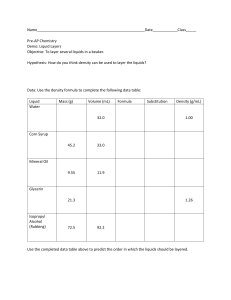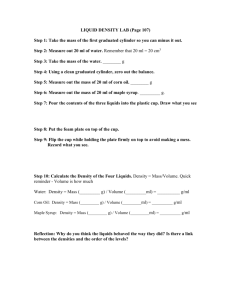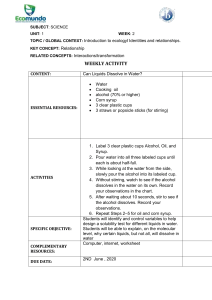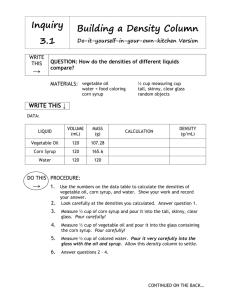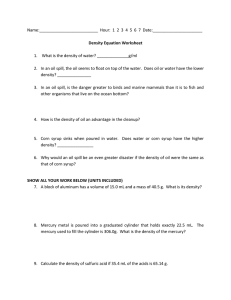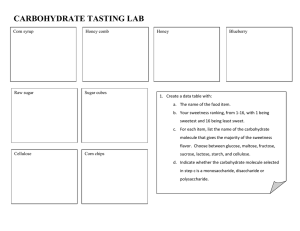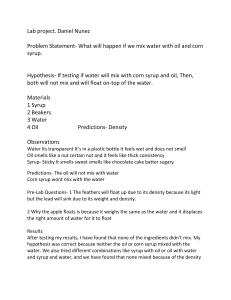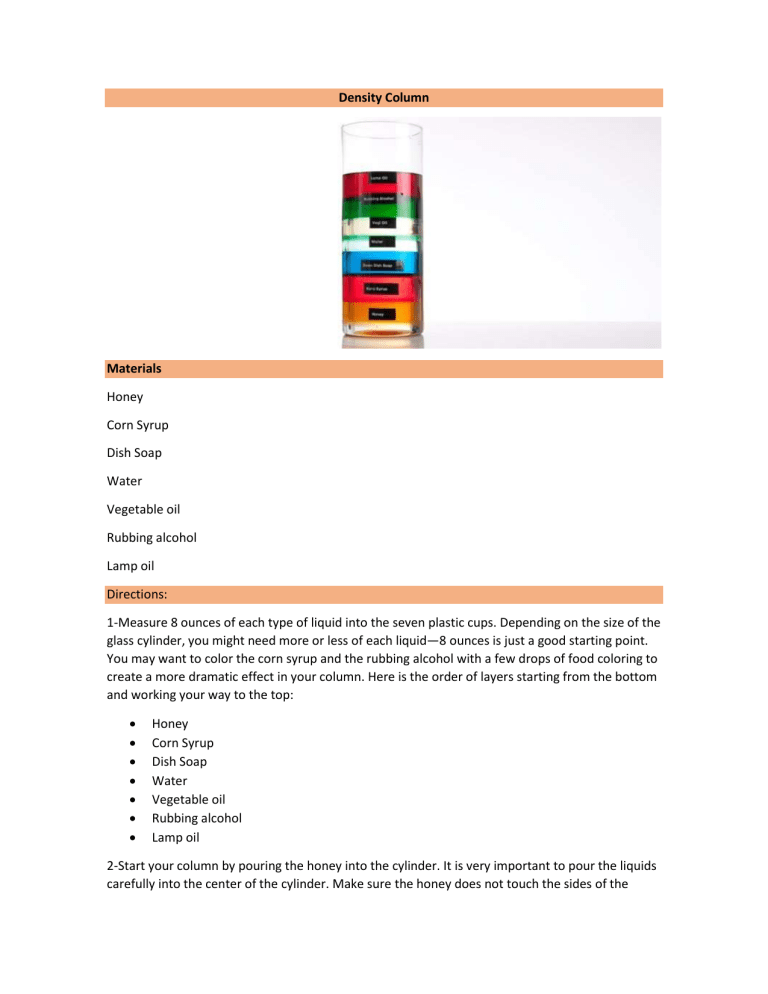
Density Column Materials Honey Corn Syrup Dish Soap Water Vegetable oil Rubbing alcohol Lamp oil Directions: 1-Measure 8 ounces of each type of liquid into the seven plastic cups. Depending on the size of the glass cylinder, you might need more or less of each liquid—8 ounces is just a good starting point. You may want to color the corn syrup and the rubbing alcohol with a few drops of food coloring to create a more dramatic effect in your column. Here is the order of layers starting from the bottom and working your way to the top: Honey Corn Syrup Dish Soap Water Vegetable oil Rubbing alcohol Lamp oil 2-Start your column by pouring the honey into the cylinder. It is very important to pour the liquids carefully into the center of the cylinder. Make sure the honey does not touch the sides of the cylinder while you are pouring. It’s important to let each layer settle before adding the next one. Take your time and pour slowly and carefully. 3-The next layer is corn syrup. Again, try not to let the corn syrup touch the sides of the container as you’re pouring. The key is to pour slowly and evenly. 4-Repeat the same procedure with the dish soap. Pour the soap directly into the middle of the layer of corn syrup . . . and take your time pouring! And repeat the same with the others materials HOW DOES IT WORK The science secret here is density. The density of a liquid is a measure of how much mass is contained within a given unit volume (density = mass divided by volume). If mass is a measure of how much “stuff” there is in an object or liquid, density is a measure of how tightly that “stuff” is packed together. Based on this density equation (Density = Mass ÷ Volume), if the weight (or mass) of something increases but the volume stays the same, the density has to go up. Likewise, if the mass decreases but the volume stays the same, the density has to go down. Lighter liquids (like water or rubbing alcohol) are less dense or have less “stuff” packed into them than heavier liquids (like honey or corn syrup). Every liquid has a density number associated with it. Water, for example, has a density of 1.0 g/cm3 (grams per cubic centimeter — another way to say this is g/mL, which is grams per milliliter). Wondering what the density of corn syrup is? What about the density of milk, maple syrup or Dawn dish soap? We’ve broken it down here for you in our table. Here are the densities of the liquids used in the column, as well as other common liquids: MATERIAL DENSITY (g/cm3 or g/mL) Rubbing alcohol 0.79 Lamp oil (refined kerosene) 0.81 Baby oil 0.83 Vegetable oil 0.92 Ice cube 0.92 Water 1.00 Milk 1.03 Dawn dish soap 1.06 Light corn syrup 1.33 Maple Syrup 1.37 Honey 1.42
